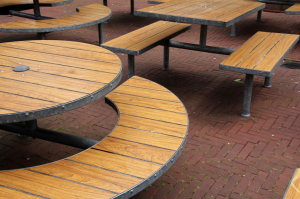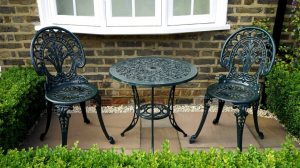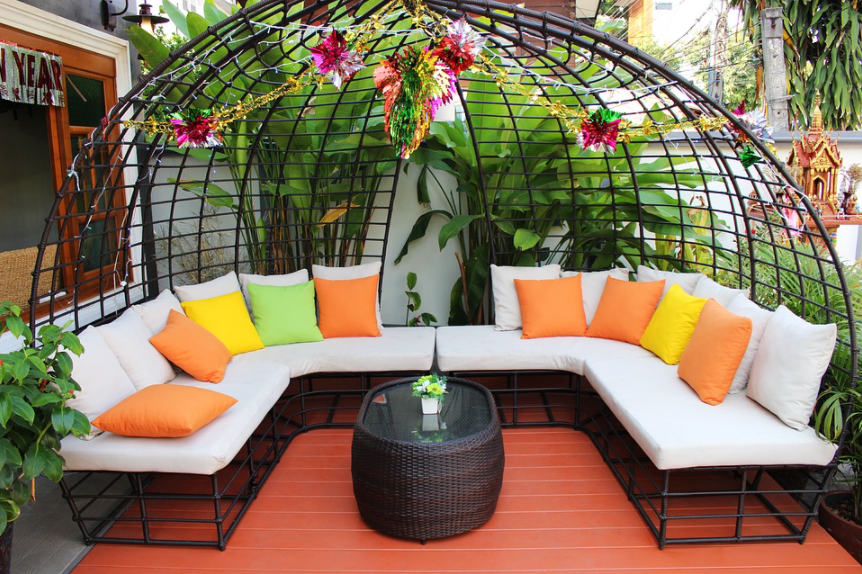Patios, when designed and maintained properly, are easily the most beautiful part of any house. One method to save some money is to do some home renovations and repairs on our own. Since it would be difficult and expensive to repair both windows and the door, I decided that a patio cover could affordably protect the bay window and back door from the elements, which would be a cheaper, more comfortable solution. Using corrugated metal, I can also reduce the required roof slope to only 10%, a 1 in 10 pitch.
Establishing the Ledger Board
 Early the next morning, the materials arrived at my house. Once the materials were unloaded, I began hauling the 10-foot-long boards and corrugated metal sheets into the yard and arranging them in a pattern that more or less matched the way they were to be assembled. After securing the boards with 4-inch screws, I applied a long-staple gun to staple the receiver and electrical wires inside the house to better protect them from the elements.
Early the next morning, the materials arrived at my house. Once the materials were unloaded, I began hauling the 10-foot-long boards and corrugated metal sheets into the yard and arranging them in a pattern that more or less matched the way they were to be assembled. After securing the boards with 4-inch screws, I applied a long-staple gun to staple the receiver and electrical wires inside the house to better protect them from the elements.
It was a little challenging to determine where I should dig the holes. I discovered all kinds of useful TV tools using formulas and advertisements from various math classes that ran through my head. I lifted a few items on the edge of the roof, using a level to make sure they were perfectly vertical. I then measured and noted two and a half feet on two of post boards and arranged them on the floor, with one decision of the vertical bars and the mark on the other end showing where to dig the hole. I then used my square foot angle to make a square.
Building the Frame
 I built the rest of the frame on solid ground, so I didn’t have to hold everything down with one hand while securing the deck screws with the other. Cut four suspenders at exact 45-degree angles. I surveyed the board’s width with a ruler, then indicated that length on the board’s edge and cut around the corner from there to make a triangle.
I built the rest of the frame on solid ground, so I didn’t have to hold everything down with one hand while securing the deck screws with the other. Cut four suspenders at exact 45-degree angles. I surveyed the board’s width with a ruler, then indicated that length on the board’s edge and cut around the corner from there to make a triangle.
I measured the short pieces of this triangular block of wood, and they were right, so I figured it was cut at a 45-degree angle. I used this to mark the lines I would cut to produce the braces. I left the outside suspenders with three fingers and the two inside suspenders with two fingers on the outside.
Discharging the Concrete
 These two boards will be screwed into their nail, with their end holding the frame as I lift it, while their different future will rest on the ground to keep the structure from coming back down. To generate the perfectly horizontal frame across the entire surface, I raised the posts a bit. I poured a large amount of thick prepackaged concrete to increase its elevation just enough to make my bubble perfect. After letting things sit for about a half-hour, I rechecked everything with the leveler.
These two boards will be screwed into their nail, with their end holding the frame as I lift it, while their different future will rest on the ground to keep the structure from coming back down. To generate the perfectly horizontal frame across the entire surface, I raised the posts a bit. I poured a large amount of thick prepackaged concrete to increase its elevation just enough to make my bubble perfect. After letting things sit for about a half-hour, I rechecked everything with the leveler.
Concluding the Job
So it was a simple but even job. I applied a bead of sealant to the boards’ edge before overlapping was a little tricky but necessary. The project was completed in the stage. This type of turning goes in each valley toward the top and bottom of the boards. Each of the other valleys around the rest of the roof section, putting the 1″ x 6″ boards at 24″ on center.…

